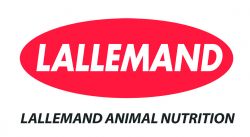
Properly fragmented corn kernels in silage allow dairy cows to make the most of the starch component in silage — paving the way for energy and milk production. Properly breaking up the corn kernels by efficiently processing the corn at silage harvest helps open the path to energy and milk production, but starch digestibility is also directly affected by the ensiling process itself.1
“In the fall, dairy producers often see a slump in milk production, or they just aren’t able to reach production targets when switching from old silage to the new crop,” says Tony Hall, MSc MSB, PAS, Technical Services – Ruminant, Lallemand Animal Nutrition. “This may be because the starch in freshly ensiled corn silage isn’t as digestible as it is in corn silage that’s been stored for months.”
In addition to fluctuations in starch content, Hall says there will be the normal variances in dry matter (DM), kernel processing score and nutrient content from one silo to the next, and from one year to the next.
Starch availability takes time
Starch is arranged in granules surrounded by proteins that are degraded over time in the stored silage.1 After a several months, the starch is more readily available for microbial fermentation in the rumen. In fact, in vitro studies have shown about a 20 percent difference in ruminal starch digestibility after eight months of fermentation.2
Fiber digestibility has a big impact on milk yield. A two- to three-unit change in ration total tract neutral detergent digestibility has been shown to correspond to a 1 pound per cow per day change in milk yield.2
“If possible, wait to open new silage until the starch becomes more digestible,” Hall advises. “Ideally, producers should wait at least three to four months before feeding. Research suggests anything less than eight months may mean you are leaving money on the table.”
The good news is that producers can make adjustments at harvest, during ensiling and after the new silage is opened.
Adjustments to maintain production
During harvest, Hall recommends adding a proven silage inoculant containing enzymes — such as Biotal® Forage Inoculants. Inoculants with high activity enzymes help break down plant fiber, which can improve fiber digestibility. The product label should clearly indicate guaranteed levels validated by independent research studies.
When producers are ready to open the new silage, make the transition gradual — over a 10- to 14-day period — and adjust the ration to balance changes in DM and nutrient content. New silage can be introduced as 25 percent of the silage portion of the ration in the first three days, then 50 percent of the ration the next three days, and so on until the transition is complete. This will be particularly important this year, as newly introduced 2019 corn silages may have a lot more moisture, be lower in starch and higher in residual sugar content.
During the transition from old to new silage this winter, herds are likely to be vulnerable to Sub Acute Ruminal Acidosis (SARA) due to high levels of fermentable sugars in the silage. The signs for SARA often are undetectable, but it effects about 40 percent of dairy cattle throughout their lactation and as much as 70 percent in first lactation cows, resulting in large financial losses. SARA is a major concern related to animal performance, health and well-being.4
Supplementing feed with an active dry yeast (ADY) probiotic can help maintain a healthy pH level and improve fiber digestibility in the rumen. Results from multiple trials show cows fed Levucell® SC, Saccharomyces cerevisiae CNCM I-1077, had more stable rumen pH profiles, produced an increase of 2.1 pounds of 3.5 percent fat-corrected milk (FCM) and were more efficient than controls.5
“When SARA occurs, it’s difficult for cows to make the best use of any ration — no matter how expertly analyzed or carefully introduced,” Hall says. “It usually takes time in storage for the starch component of silage to become more available. However, all bets are off this year, as many regions will have corn silage that is in lower in total dry matter and starch levels. Due to the high residual sugar content and more digestible starch, it will be easier to ferment in the rumen. In the meantime, producers can make the silage changes gradual and use a proven probiotic to help optimize the rumen function and maintain optimal performance during any change to the ration.”
For more tips on preparing for silage harvest, visit www.qualitysilage.com.
Lallemand Animal Nutrition is committed to optimizing animal performance and well-being with specific natural microbial product and service solutions. Using sound science, proven results and knowledge, Lallemand Animal Nutrition develops, produces and markets high value yeast and bacteria products ─ including probiotics, silage inoculants and yeast derivatives. Lallemand offers a higher level of expertise, leadership and industry commitment with long-term and profitable solutions to move our partners Forward. Lallemand Animal Nutrition is Specific for your success. For more information, please visit www.lallemandanimalnutrition.com.
1 Shouse C and Ramírez HA. Corn silage keeps changing! Iowa State University Extension DAIRY News & Views. December 2017.
2 Ferraretto LF, et al. Effect of ensiling time and hybrid type on fermentation profile, nitrogen fractions, and ruminal in vitro starch and neutral detergent fiber digestibility in whole-plant corn silage. Applied Animal Science, (31);2:146-152.
3 Fyksen J. Fiber digestibility drives milk yield. AgUpdate. Available from: agupdate.com/crops/forages/fiber-digestibility-drives-milk-yield/article_d64987ef-2b33-5ced-abbd-408ab7796275.html. Accessed on Aug. 23, 2019.
4 Penner, et al, Severity of Ruminal Acidosis in Primiparous Holstein Cows during the Periparturient Period. J. Dairy Sci. 2007; 90:365–375.
5 de Ondarza MB, et al. The Professional Animal Scientist. 26(2010): 661-666.


